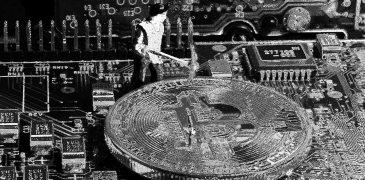A reminder that if you're not creating blocks, you're not a node on the Bitcoin network

If you’re not creating blocks and adding to the blockchain, you’re not a node. Bitcoin creator Dr. Craig S. Wright has hit out again at the notions of “non-mining nodes” and “routing nodes,” saying they have little purpose and play no role in securing the network.
Blockchain followers outside of BSV will often refer to “mining nodes” and “non-mining nodes.” Only the former creates blocks and receives the block subsidy, yet some believe those who simply monitor transactions without processing them serve an important security function.
This is not true, writes Dr. Wright in his latest blog post. Such beliefs exist to “mislead individuals and regulators about the nature and distribution form of the network.” BTC supporters can claim their network of “miners” is huge and widely distributed, and thus impervious to government intervention. It isn’t.
What’s the point of running a node, then?
So why would anyone want to run a “node” if they’re not processing transactions or receiving any reward for it? There are many parties on other networks that do so. Some believe the more systems keeping an eye on the blockchain, the more secure it becomes.
Disagreement over what roles “non-mining nodes” play is demonstrated in this Twitter exchange. SPV, or simplified payment verification, is described in the 2008 Bitcoin white paper, and its purpose is to verify transactions faster so that individual businesses using the network don’t need to.
As others pointed out, a merchant or business might run “read-only” nodes to verify transactions relevant to its own operations (in the absence of SPV). As Dr. Wright points out, those may assist in helping that store to more quickly confirm payments it receives. But to the network overall, they’re irrelevant. With SPV services available, running your own full node just to verify transactions is a waste of money and energy.
Dr. Wright says that a node controlled by a single entity counts as a single node. It does not matter how many systems are operating within that node. In other words, a large mining pool may use the processing power of thousands of member systems all around the world, but it’s only a single node as far as the network is concerned.
While each actual mining node is “densely connected with other mining nodes through at least one connection” with at least 11,000 edges, he writes, while non-mining or “routing nodes” has an average of around eight. Those nodes don’t connect to all mining nodes or other businesses like exchanges. They do nothing for network security since all mining nodes would reach consensus before sending/receiving anything from the “routing nodes.”
Network ‘decentralization’ is Bitcoin’s superpower?
This makes a mockery of some blockchains’ claims to be “more decentralized” merely because they have more users/node operators. A single member of a mining pool is not a node itself. It’s not creating blocks by itself—therefore, it’s not a mining node. That distinction belongs only to the entity operating the pool.
As a result, even a “large” network like BTC will only have (at best) 15 or 16 nodes, and more likely only three or four. And Bitcoin nodes, whatever “type” of Bitcoin you’re referring to, are just commercial server farms, Dr. Wright says. As an example, a huge server farm operated by Amazon or Google doesn’t consist of thousands of network nodes, but just one—the large corporation that owns the farm.
This is also relevant when discussing whether or not a government or a court can effectively control what goes on the blockchain via orders and regulations. The answer is yes, they can. If there are ten or fewer actual nodes on the network, most likely, they are large operations whose owners have invested a lot of money in setting them up. They’re also identifiable with records in each block’s hash header.
Dr. Wright also took care to mention that “BTC” is not actually Bitcoin, but simply “a ticker symbol associated with a system that is emulating components of Bitcoin” while passing itself off as Bitcoin. While it’s important to make that distinction, both BTC and Bitcoin (BSV) function similarly in terms of transaction verification by nodes, so they are effectively bound by the same reality.
Watch: CoinGeek New York presentation, BSV Technical Update
Source: Read Full Article
